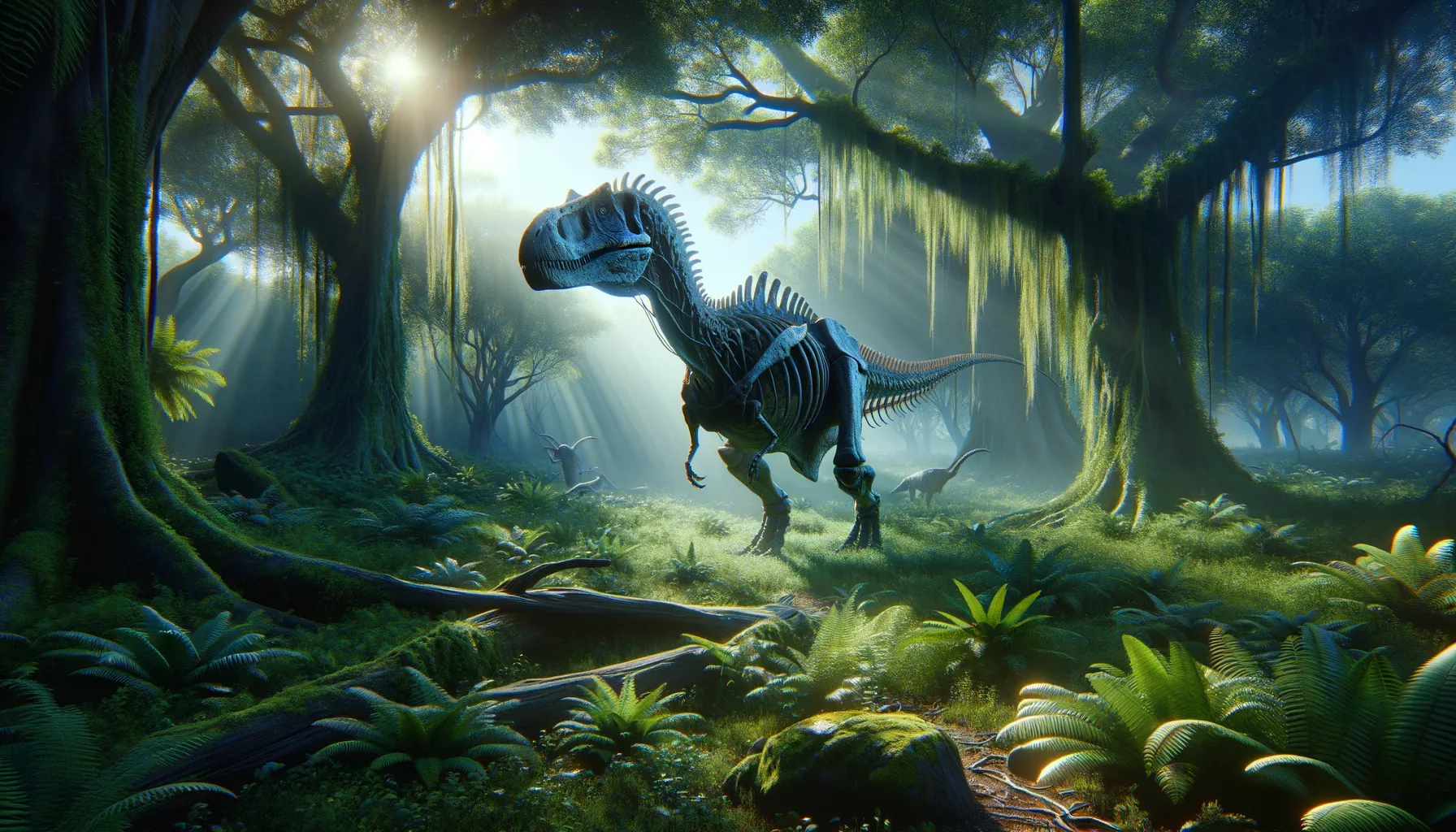
Astrodontaurus
The giant of the ancient forests.
Period
Cretaceous
Length
Length could reach up to 85 feet.
Height
Height was around 40 feet at the shoulders.
Weight
Weighed approximately 30 tons.
Astrodontaurus was a massive dinosaur that roamed the earth during the Cretaceous Period. It was characterized by its gigantic size and distinct skeletal structure, making it a fascinating subject for paleontologists. Its fossils have provided insight into the diversity of life and evolutionary relationships among dinosaur species. This dinosaur primarily inhabited lush, forested environments and was distinctly herbivorous, relying on vast quantities of vegetation to sustain its large body.
Diet
Astrodontaurus was an herbivore, feeding on a wide variety of plants including ferns, cycads, and conifers. Its enormous size required a vast amount of plant matter, making it a continuous feeder in its lush habitat.
Hunting
As a herbivore, Astrodontaurus did not hunt for its food. Instead, it grazed continuously and used its large neck to reach high vegetation, making it less dependent on ground-level plants.
Environmental challenges
Astrodontaurus faced challenges such as fluctuations in climate, which affected the availability of its plant-based food resources. Seasonal changes could lead to scarcity in its preferred vegetation, requiring migration to new areas. Additionally, competition for resources with other herbivorous dinosaurs could have been a constant struggle, influencing its daily survival tactics.
Speed
Known for its slow and lumbering movement.
Lifespan
Estimated to live up to 100 years.
First discovery
Discovered in the late 1800s by paleontologists in North America.
Fun Facts
- Astrodontaurus was a large herbivorous dinosaur that lived during the Early Cretaceous period.
- This dinosaur's name means 'star-toothed lizard' due to the star-shaped pattern on its teeth.
- Astrodontaurus belonged to the sauropod family, which includes some of the largest dinosaurs to have ever roamed the Earth.
- Its long neck allowed it to reach high into the trees to feed on leaves and branches.
- Fossils of Astrodontaurus have been mostly found in North America, particularly in Maryland.
- The exact dimensions of Astrodontaurus are uncertain, but it was estimated to have been about 15 meters long.
- Astrodontaurus had small, peg-like teeth adapted to stripping vegetation rather than chewing, typical of sauropods.
Growth and Development
Astrodontaurus hatched from eggs and underwent rapid growth during the early years of life. Juveniles quickly developed robust limbs and a long neck to enable efficient feeding. Over time, their bones would become denser and stronger to support their massive size.
Habitat
Astrodontaurus thrived in dense, forested regions where abundant vegetation was available. These areas also provided cover and shelter from predators. Rivers and lakes within these habitats ensured a steady supply of water for drinking and cooling down during hot seasons.
Interaction with other species
As a large herbivore, Astrodontaurus likely interacted peacefully with other herbivores, possibly forming mixed herds for protection. Predators avoided direct conflict with grown individuals, but younger dinosaurs might have been at risk. It may have also played a role in shaping the vegetation structure through its feeding habits.
Natural lifespan
Astrodontaurus could live to around 100 years if it avoided predation and disease.
Reproduction
Astrodontaurus laid large, leathery eggs in nests on the ground. Mating rituals likely involved displays of strength or visual signals. Parents may have guarded the nest to protect their vulnerable eggs from predators.
Social behaviour
Astrodontaurus likely exhibited some social behaviors, forming loose groups for migrating and feeding. These group dynamics could aid in protecting the young and deterring predators, though detailed social structures are still speculative.
Fossil locations
Fossils of Astrodontaurus have been found in various locations across North America, providing valuable information about its distribution and ecological preferences. The most notable discoveries have been made in regions that were once lush lowland environments.
